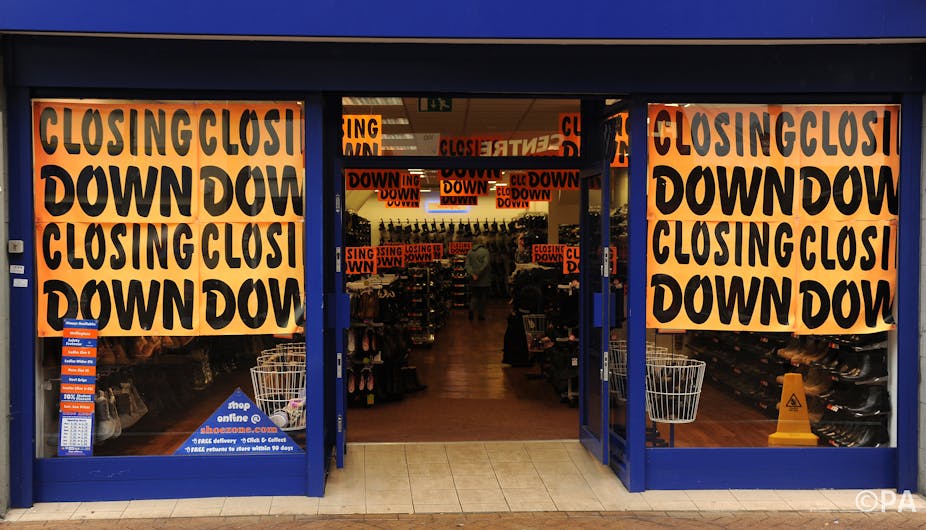A bonfire of red tape that would “revitalise our high streets” - that’s what planning minister Nick Boles has promised. This might have been drawn from Mary Portas’s 2011 report on the future of the high street, whose recommendations have been largely ignored, but the announcement was related to a Department for Communities and Local Government (DCLG) consultation on a fairly small change to remove the need for planning permission to transfer commercial buildings to other uses, including residential. Nevertheless, Bill Grimsey, writing in the Daily Telegraph, LINK saw it as an admission “that the traditional high street is dead” and that for “large parts of our town centres, it’s time to give up”.
Although Grimsey may have taken some licence in order to bang his drum, the sight of boarded-up high streets throughout Britain questions the vitality of our town centres. Indeed, a 2011 Department for Business, Innovation and Skills report found that the number of British town centre shops fell by almost 15,000 between 2000 and 2009, with an estimated further 10,000 closures up to the end of 2011. Nearly one in six shops stands vacant.
There are a number of drivers behind this. First and foremost the ongoing economic crisis, but also the way many chain stores are owned and financed, and the longer-term changes in shopping behaviour which has led to the rise of the supermarket and online shopping (see the Portas Review). Some of these factors will change over time, but others won’t. The problem is that socio-economic forces generally change us quicker than we change our towns and cities. Buildings are notoriously “sticky” creations, through which we sometimes find ourselves lumbered with symbols of the prevailing conditions, theories or trends of years before - just look at the rise and fall of Brutalist architecture, for example, or the legacy of large office buildings in a place like Croydon which reflect the labour-intensive, paper-based commercial enterprises of the 1960s.
But in proposing to take powers out of planners’ hands, Boles is in effect stating planners have failed to protect town centres, and the way forward is deregulation. On the surface this has some merit.
For too long during the boom years many planners unduly favoured retail as the only route to regenerate urban centres. One might have reasonably asked: how many shops do we really need? Similarly, planning orthodoxy has favoured mixed use developments as key to vibrant urban living, in line with the ideals of New Urbanism. Mixing uses increases accessibility, reduces the need for travel (thereby promoting sustainability) and engenders a sense of vitality throughout the day, rather than the dead zones created by streets of offices and shops that close at night. This appears to be what Boles and the DCLG’s changes are promoting.
I don’t believe these changes will have the desired effect. Regulation can be good: for all their faults, planning regulations have actually promoted what life is left in the high street. For many years, the Town Centres First policy meant big retailers, who would far rather set up in out-of-town shopping parks, were forced to open in town centres. Even if there were some costs associated with this policy, it helped preserve and contain many high streets, compared to the edge-of-town highway sprawl common in the United States.
The use-change regulations being abandoned by the government have their advantages too. They don’t mean a local authority will always stop you converting an empty commercial premises into housing. But they will ensure due attention is paid to the knock on effects - the “externalities” - of neighbouring land-uses, including noise, smell and other factors. This is important, particularly given the persistent underlying intolerance for urban living that seems to run though the English psyche. And once empty offices and shops are converted to housing, there’s little chance they would be converted back, even if a better economic conditions in the future saw increased demand for the very commercial space which is now housing.
A better approach to deregulation would be if government promoted mixed-use town centres through planning policy guidance and thus ensured local authorities actively and properly planned for this through their local plans. We need town centres that attract different groups to use them in different ways and at different times to make towns feel alive.
Often town centres could use better quality public spaces to act as meeting places, with different spaces for different groups (I was struck by how aware of this planners in Copenhagen were during a recent visit). This could be helped by more government funding than the measly £1,000,000 shared between seven for the recent High Streets Renewal Award.
Another possibility is if, rather than immediately seeking a new, permanent use, empty premises can be used for a range of temporary uses - community facilities, artist studios, event spaces or pop-up shops. Landowners have an important role to play in making this happen, and a good landowner can have a strong influence in helping promote the best use of their premises to foster a healthier high street; unfortunately in many cases they appear disengaged from local communities and uninterested in anything other than high-rent, long-term tenants, even when this means leaving the property empty.
There are a number of statutory powers which can be used in relation to empty units and absentee landlords, but as with much else here, there’s a real need for positive planning and a strong lead from local authorities. These are a struggle when severe budget cuts and staff cutbacks strip their functions to the bare regulatory minimum.
A well planned, bustling high street is a vital part of Britain’s urban fabric. Broad societal changes mean that, even if the economy were to boom, the high street will never be quite the same. But with a better, more thoughtful approach it could still have a future.

